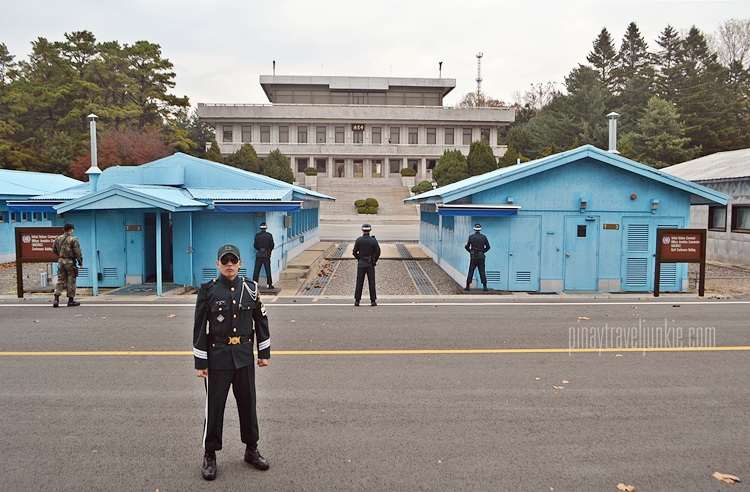
Long story short: I almost didn’t make it to the Panmunjom tour.
Short story long…
Ahhh, the unknown perils of the Seoul Metropolitan Subway on an early Tuesday morning. I checked the time. 7:42 AM. What am I missing here?! I (all sweaty from anxiety) — stripped down to a single layer of white shirt — stood still on a platform at Euljiro 3(sam)-ga Station staring at a screenshot of Google Maps on my phone as a gaggle of Seoul’s workforce clad in black suits and trenchcoats rushed past. Even in panic, I thought, that would make a dramatic subject for a time lapse.
I had eight minutes left to riddle out, the old-fashioned way, how to get to Euljiro 1-ga Station then navigate my way to President Hotel — meeting place set by the tour operator. About four minutes of which I wasted riding another packed train to Euljiro 4-ga Station, a station farther, before realising that I had to exit the subway and reenter to get to the other platform for a train which heads the opposite direction. Google Maps didn’t tell me that.
8:00 AM, I finally arrived at Euljiro 1-ga Station. I sprinted out of the carriage (might have shoved people outta my way) and prayed to the subway gods to show me the right path. It didn’t take long for me to find, thanks to the directional signs. However, when I got to the turnstiles, my single journey ticket which I had just purchased at Euljiro 4-ga Station said it’s got 0 cash in it. The turnstile bar wouldn’t budge. I snatched tapped a local man’s arm (who had just passed the gate beside mine), and pointed at my ticket, hoping he’d get my message in one quick gesture.
He did. And he motioned for me to stand behind a part of the gate where a help button can be pushed to call a train station attendant. I did. And I stood there feeling as though I had just been placed in the naughty tourist corner. In a desperate move, I asked if he could make a call for me and explain my predicament to the tour operator. And not only did he do that, he boldly suggested for me to crawl under the turnstile barrier (no attendant came to the rescue) and escorted me to my exit. My farewell to my knight in a business suit was an apology for all the trouble. To which he replied, “It’s okay. I’m not late for work yet.”.
The tour guide was already waiting for me in front of President Hotel — which was just right outside the street exit. I made it. “I thought I lost you.”, it sounded like a line from a Koreanovela. She had a look of genuine concern on her face. “I thought I was gonna lose my mind.”, I panted.
Panmunjom was the main priority of the trip, and it was my last day in Korea. Missing the tour was not an option.
Keen on visiting Panmunjom too? Or perhaps the less intimidating DMZ?
I didn’t book/organise a tour ahead in the fear of not getting my passport back from the Korean embassy in time for my trip (it was delivered just the day before my flight). But for you folks who got the luxury of time to prep, I’ve rounded up some pointers to hopefully serve as a guide.
1. The DMZ Tour doesn’t let you step on North Korea territory.
First, let’s get this straight.
The DMZ (Demilitarized Zone), is a no man’s land. A buffer zone, created in the Armistice (Take note, “armistice”. A ceasefire is in place.) Agreement of 27 July 1953, that divides Republic of Korea (South Korea) and the Democratic People’s Republic of Korea (North Korea). The DMZ tour lets you in this zone, but not in the Joint Security Area (JSA) where you could safely cross the demarcation line in a building maintained by South Korea. If you want to visit the JSA, book a tour that specifically indicates that it includes Panmunjom.
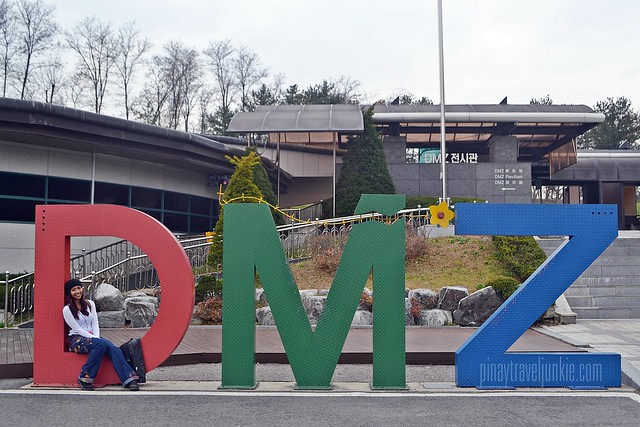
All visitors must sign up for a tour. It’s best to book in advance, a lot of tour companies can be found online. Although you’re likely to find an available spot the day before, ask a hotel/hostel staff to make calls for you for immediate confirmation.
2. Tours include various sites. Browse the list. And do your own research.
Here are of some of the sites that are included:
Imjingak Park. The village of Imjingak, just 7 kilometres from the demarcation line, is host to (and surrounded by) a handful of monuments related to the Korean war.
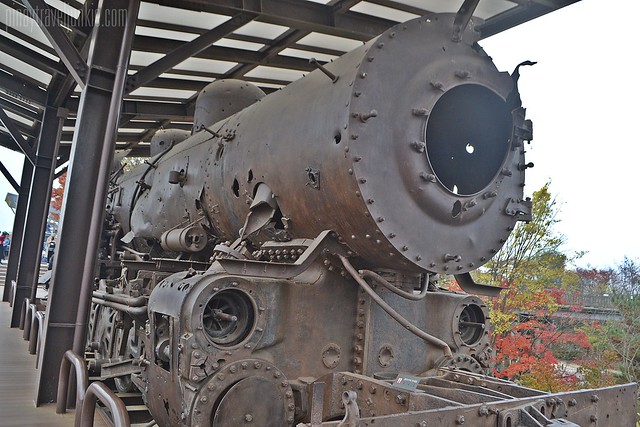
The Bridge of Freedom An old railroad bridge used by soldiers and POWs returning from the north. These days, South Koreans tie ribbons to the bridge (sometimes tied to the fences) with messages written on them for their families who remained in the north.
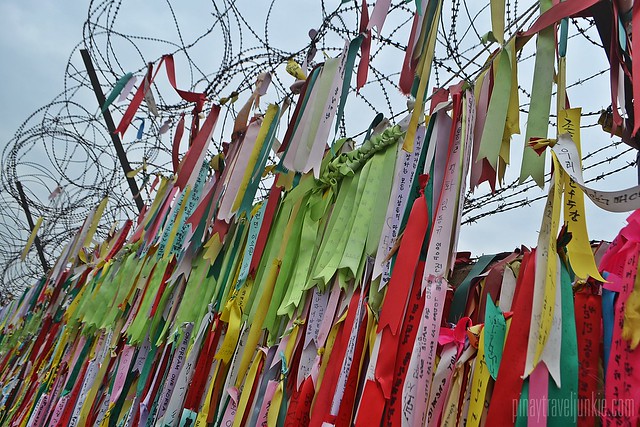
The 3rd Infiltration Tunnel and DMZ Theater/Exhibition Hall. This tunnel, also called Third Tunnel of Aggression, is one of the four discovered tunnels underneath the border of North and South Korea. According to the presentation at the DMZ Theater (we watched a short film), it can accommodate 30,000 soldiers with weaponry. North Korea claims it was dug for coal mining, although there’s no geological evidence of coal being present in the area. Visitors are allowed to walk through the tunnel up until one of the barricades that have been set by South Koreans which mark the military demarcation line. Our guide mentioned “It’s steep.” one too many times — which we brushed off. We later realised it felt like a full on hike, going back up.
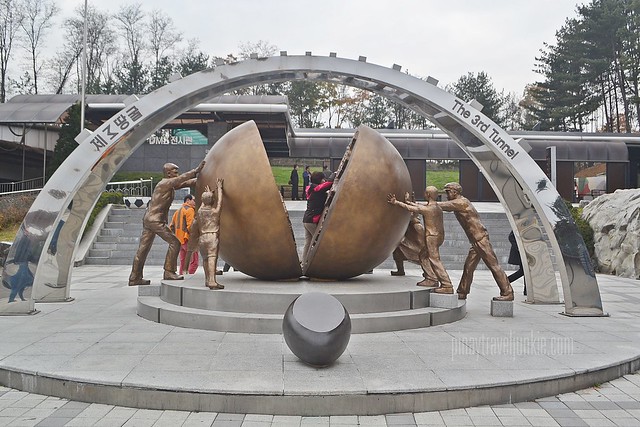
Dora Observatory. Perched atop Dorasan or Mount Dora, it’s the closest visitors can get to the North (if not joining the Panmunjon Tour). Through binoculars, one could catch a glimpse of the North Korean propaganda village, Kijong-dong.
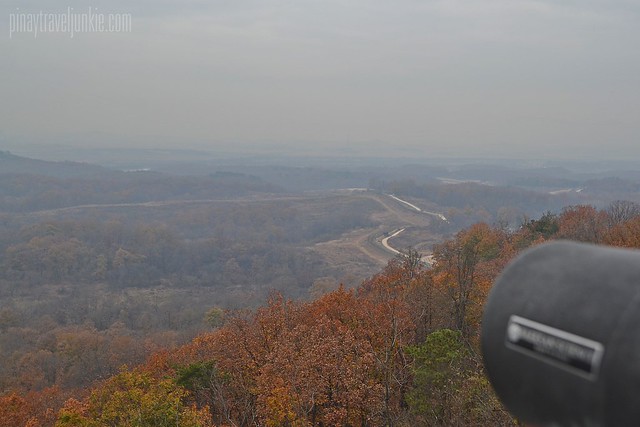
Dorasan Station. A railway station on the Gyeongui Line, which used to connect North Korea and South Korea. Visitors can buy a ticket to walk around the station and have their passports stamped with a souvenir visa.
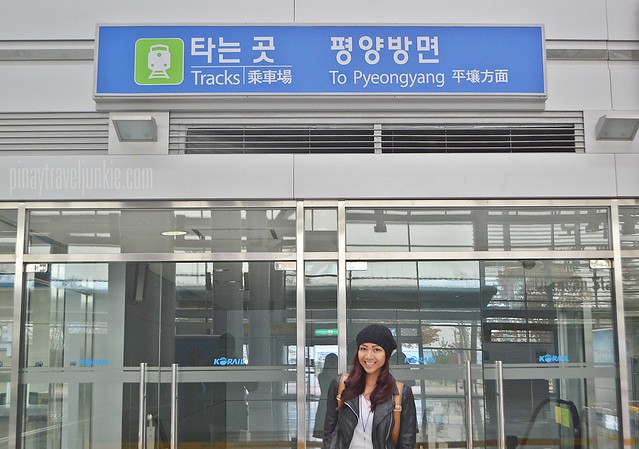
Take note that, as with most museums, the tour is not available on Mondays and national holidays.
Don’t forget to bring your passport as this is checked by the tour guide.
3. It can be an overwhelming itinerary.
Keep in mind that you may be given just 10-15 minutes each site (or less if, uhm… One of your tour mates rocked up late *cough, cough*). Too short to properly take everything in. Deffo not a lot of time for your 359874 selfies. And you’ll find yourself brisk-walking here and there. So be prepared.
Also, the ratio of guide to tourist is 1:the whole dang bus. When you’re dropped off a site, you’re basically on your own (except in Panmunjom). If there’s a particular spot you need to see, ask your guide, so as not to waste your time aimlessly wandering about like a headless chicken.
4. If it says “No Shopping Tour”, it means it.
You can bet your bottom Korean won on this one. Actually, most tours don’t take visitors to touristy markets. There’s simply no time for that anyways.
Also, you’ll find that there aren’t much souvenir shops on site.
5. JSA and Panmunjom Tour imposes more restrictions. Read the fine print.
Important pointers about the JSA Tour:
– Passports will be checked about 4 times during the visit (visitors from some countries need to provide a colored photocopy of the photo page of their passport at least 4 days prior to the tour). Keep them handy when the guide says so.
– Minimum age is 11.
– Clothes such as ripped jeans, sleeveless tops, mini skirts, shorts, military printed clothes, active wear, round neck t-shirts, and sandals are not permitted in the tour area. And unkempt hair is not allowed. Seriously.

– Visitors will be transferred from their respective tour buses to UNC (United Nations Command) buses once they get in the JSA. And from thereon, a United Nations Command soldier will be the guide.
– Visitors must sign a waiver agreeing that no one is responsible for injury or death as a result of enemy action.
– Do not make any gestures towards, speak with, respond to North Korean soldiers from the other side.
– Take photos only when given the go signal. Visitors can take cameras to the Freedom House, but not its bags.
6. JSA visitors must sign a waiver.
“We don’t really want to call it a tour. It is an educational program.”, said our guide aboard the bus. This waiver is signed at Camp Bonifas (and in true Korean fashion, signed with a cute character pen provided), prior a short film showing.
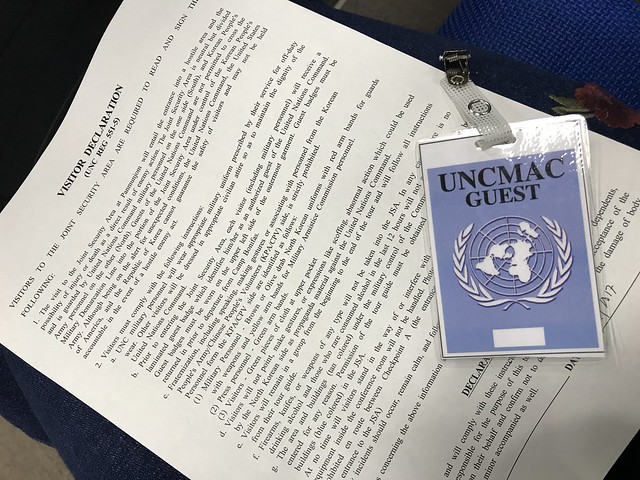
7. There’s not a lot of time provided for taking photos.
Especially for the JSA and Panmunjom Tour. If you’re told you got two minutes to take photos, it’s prolly just one. So if you want to have your photo taken with a soldier in the UNCMAC building, standing on (technically) North Korean territory, go for it right away. The rest of your busmates might have the same thing in mind.
8. JSA and Panmunjom Tours may be canceled/cut short if tensions rise.
I booked my tour via Klook. I booked even if the tour was scheduled a day after my flight. I was prepared to change my flight because, I didn’t want to leave the country without stepping on North Korean soil. Fortunately, Klook contacted me to say, they had to move me to a tour a day earlier — meaning I didn’t have to reschedule my flight. Ain’t I a lucky duck?
Some were not as lucky. On the day of our tour, the morning group was canceled because President Trump was in the country. Apparently, all morn groups the following two days were also canceled. Just because he might pay a visit.
Tour schedules are subject to official and military considerations and changes. According to our guide, they’re conducting only 8 tours throughout November (I visited first week). Some months, they get less because tours are evenly distributed to all organisers.
Suffice it to say, a JSA and Panmunjom Tour can be very difficult to secure. And there’s no 100% assurance of being brought to the site on tour day as much as there’s no assurance of seeing a white rhino on a Serengeti safari (I honestly don’t know I came up with this comparison). Also, sadly, you may not get a refund if a tour is canceled.
9. Prepare to pay a (relatively) hefty amount.
It’s a pricey tour, about $80 for the Panmunjom tour alone. Paired with DMZ, can be $100+ (DMZ half-day tour alone is about $40). But hey, that’s a small price to pay for your security.
“It may seem peaceful out here, but the air is always tense.”, our UNC guide said aboard the bus. I did feel a bit uneasy when we were lined up atop the Freedom House steps, facing the North Korean building, as if we were facing a firing squad — but the feeling only lasted until the guide finished his briefing, then told us we had two minutes to take photos. It was pandemonium. The excited kind.
10. Visitors to gain better insight.
The tours, though seemingly rushed, provide enough information for visitors to get a deeper understanding of the real situation between South and North Korea. Aboard the JSA bus, whilst on our way back to Camp Bonifas, we were given a chance to ask questions. So ask away. Our UNC guide was popular amongst the ladies, and the questions got a little personal. But he was game, and was able to answer everything… Except… Questions regarding Lee Min-ho’s military training.
So leave such query out Koreanovela fans.
